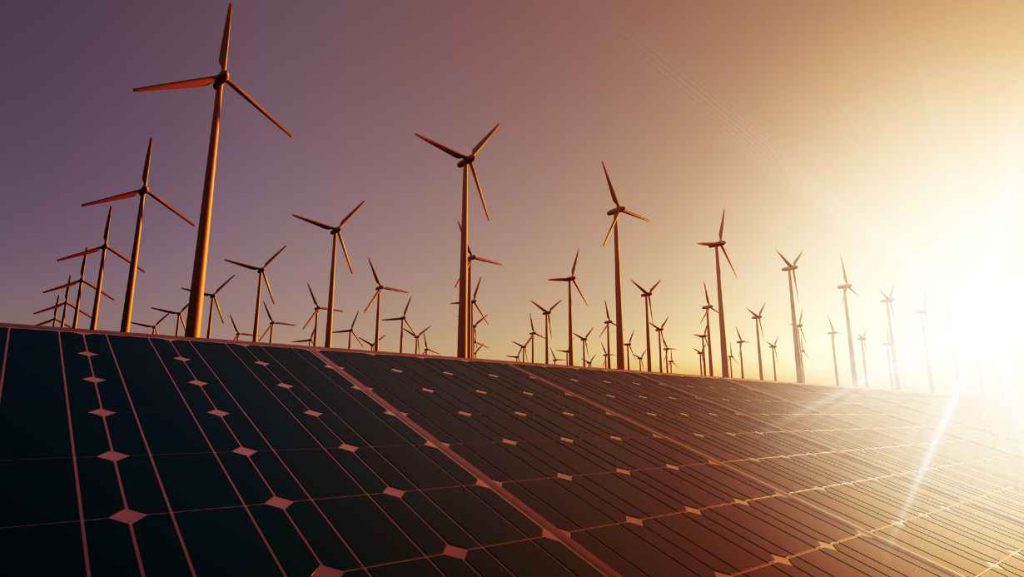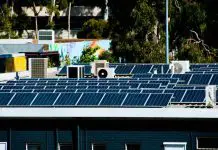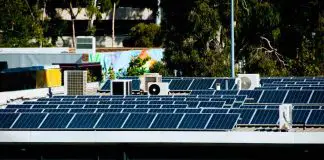Renewable energy, for example solar panels, wind turbines, and hydroelectric dams, is often hailed as a critical strategy in the fight against climate change, mainly because they reduce greenhouse gas emissions and carbon dioxide.
Renewable energy poses is generated from the natural processes that are continuously replenished, such as sunlight, geothermal heat, wind, tides, water, and various biomass forms, Unlike fossil fuels — coal, oil, and natural gas.
But development in the renewable energy sector can have harmful effects on the environment. Countries around the world are switching to reduce emissions and shifting away from fossil fuels.
And whereas renewable energy poses is one of the best practical ways to do so, though it’s not always free of environmental impacts, it has intense and well understood environmental impacts, especially on Wildlife Conservation.
Let’s have a read on how Renewable Energy poses challenge for Wildlife Conservation and take time to read through-
Contents
How is Green Renewable Energy?
Many countries are eagerly looking to install solar, and wind farms for being off carbon-based or so-called “dirty” energy, a few countries, operators, and the industry itself have comprehensively tacked the long-term effect. And the result is to dispose of these systems, which have environmental hazards like toxic oil, metals, fibreglass, and other harmful material.
The environmental impacts associated with wind & solar power can include
- Ecological land use
- Endangered habitat loss
- Excess water use and the
- Use of hazardous materials for manufacturing
However, the types of impacts vary significantly depending on the process’s scale and the technology used.
News releases that French farmers claim that solar panels and wind turbines in Brittany are releasing electricity into the ground, slowly killing their livestock.
In the Brittany region, several farmers have reported losses of hundreds of cows, and veterinarians have been unable to explain the cause.
The mysterious cattle deaths have led one Côte d’amour farmer to file a lawsuit against a company, which has not been named, A farmer lost around 200 cows in five years, blaming antennas transformers and turbines in the area. The human body can resistance of 1,500 Ohms, while the cows have only 500 Ohms of electrical power.
Renewable Energy Poses a Threat to Wildlife Conservation
Renewable energy is produced by using technologies that convert the natural power of the sun (solar), wind, plants (biomass), and water (hydro, tidal, and hydrokinetic) into electricity and Earth’s heat (geothermal). In the past decade, the solar and wind energy development scale has expanded worldwide.
Wind turbines now provide power grids in different regions. The number of utility-scale solar energy projects is overgrowing in the U. S., Western, Asian & African Regions.

Many large projects occur on undeveloped public lands, and new projects are anticipated to occur at an increasing rate, which can create further stress on wildlife.
As new projects often occur in adjacent to wildlife habitats, ecological science plays an essential role in guiding project siting and operational decisions.
To understand the factor that poses a threat to wildlife conservation by driving renewable energy expansion and what might hold it back, we’ve put together a series of prominent recent developments and the significant forces that pose a threat to wildlife & the environment.
How does renewable energy affect wildlife? Here are few examples:
Wind farms and massive area of solar panels are cropping up across public and private landscapes in the United States (U. S.) and other countries. Users increasingly turn to “renewable energy” as their preferred flavor of electricity. Here are few examples renewable energy affect wildlife:
- In both land-based and offshore wind turbines, Wind turbines kill millions of migratory birds and bats each year from collisions.
- Hydroelectric dams sometimes block migration routes for fish, preventing them from breeding and causing high juvenile mortality rates.
- Concentrating solar plants are known as “power towers,” produce beams of sunlight that are intensely ample to burn insects and birds.
Impact of Renewable Energy Poses on the Environment
Suppose you consider the intensity and magnitude of environmental impacts from renewable energy development, which vary depending on the technology we used, the extent of land conversion, and several other factors.
But one of the essential determinants is project siting. Project location should be developed in areas with little wildlife habitat for considering ecological standpoint.
However, in the United States, government agencies at both the state and federal levels have yet to adopt strong renewable energy policies regarding wildlife conservation.
In the U.S., utility companies have built renewable energy projects on mostly undeveloped areas where land prices are less high but where risks to biodiversity may be more significant than in more developed regions that show in the writing.
Wind Turbines Causes of Bird Fatalities
Wind turbines or other “green energy” products such as solar panels wear out. They are creating new types of hazardous waste, and windmills are the least energy-producing and most physically challenging renewable energy waste.
The sheer size of the windmills and facing difficulty to dispose of them. The high promise of future wreckage.
In the United States, birds provide billions of dollars in economic benefits, such as overturning insect pests in crop fields and pollination of essential desert plants.
Nevertheless, unprecedented numbers of birds began dying at wind power facilities around the millennium turn, creating an understanding of the causes of bird fatalities at wind turbines and eventually find solutions to this new problem.
In-flight, even echolocation birds perceive distant objects primarily through vision and can see in dim lighting conditions.
The accumulative evidence indicates that tree birds might mistake wind turbines for trees in the dark—a possibly fatal case of mistaken character.
The impacts of Solar Energy on wildlife: Effects due to construction and decommissioning
By 2050 just for solar waste
- U. S., 10 million tons.
- Germany, 3 million tons.
- China, 20 million tons.
- Japan, 7.5 million tons.
- India, 7.5 million tons.
This information released by the U.S. Environmental Protection Agency predicts these startling global numbers for countries. Solar arrays’ life cycle is about 30 years.
Still, the rapid adoption of solar in the United States and elsewhere has the problem faster rather than later of disposal creeping up in the rearview mirror.
The construction of solar energy facilities will impact wildlife, including rare and endangered species and their habitats.
These activities involve substantial ground disturbance and direct mortality, and indirectly habitat loss, degradation, and modification impact wildlife and their habitat.
Mortality of wildlife-Underground animals can be affected, including species that hibernate underground.
Even lightweight vehicles like motorcycles are capable of causing significantly increased soil density (soil compaction) at a depth of 30–60 cm as their tires pass over the surface.
Similar or more significant impacts would be expected from the heavy equipment associated with the energy facility’s construction activities.
Destruction and modification of wildlife habitat- ground-disturbing activities affect various functions in the desert, including soil density, water infiltration rate, vulnerability to erosion, secondary plant succession, invasion by exotic plant species, and stability of cryptobiotic soil crusts.
All of these processes have the ability—individually and together—to alter habitat quality, often to the detriment of wildlife. Any disturbance and alteration to the landscape, including the construction and decommissioning of utility-scale solar energy facilities, can increase soil erosion.
Erosion can physically and physiologically affect plant species and can thus adversely influence primary production and food availability for wildlife.
Solar energy facilities require substantial site preparation (including vegetation removal) that alters topography and, thus, drainage patterns to divert the surface flow associated with rainfall away from facility infrastructure.
Channelling runoff away from plant communities can have dramatically negatively affected water availability and habitat quality.
Areas deprived of runoff from sheet flow support less biomass of perennial and annual plants relative to adjacent areas with uninterrupted water-flow patterns.
Off-site impacts- Direct impacts on wildlife and habitat can occur well outside the energy facility’s actual footprint.
Extraction of large amounts of raw materials for the construction of solar energy facilities (e.g., aggregate, cement, steel, glass); transportation and processing of those materials; the need for large amounts of water for cooling some installations; and the potential for the production of toxic wastes, including coolants, antifreeze, rust inhibitors, and heavy metals, can affect wildlife adjacent to or far from the location of the facility.
Large-scale solar facilities’ material requirements exceed those for conventional fossil-fuel plants on a cost-per-unit-of-energy basis—besides, water used for steam production at one solar energy facility.
The wastewater was pumped into evaporation ponds that attracted birds that fed on invertebrates. Although selenium toxicity was not considered a threat based on one study’s results, the possibility exists for this toxic micronutrient.
The impacts on wildlife: Effects due to operation and maintenance-
This category includes the effects related to the presence and operation of the solar facility, not the physical construction and decommissioning of the same.
Habitat fragmentation-Roads and urban development continue to contribute to habitat fragmentation for any renewable energy poses setups. Large-scale energy development has the potential to add to and exacerbate the situation, presenting potential barriers to movement and genetic exchange in wildlife populations, including those of bighorn sheep (Ovis canadensis), deer (Odocoileus spp.), tortoises, and other species of concern and social significance.
Noise effects- Industrial noise can impact wildlife, including changes to their habitat use and activity patterns, increases in stress, weakened immune systems, reduced reproductive success, altered foraging behavior, increased predation risk, and degraded communication with conspecifics, and damaged hearing.
Changes in sound level of only a few decibels can elicit substantial animal responses. This level of noise caused hearing loss in animals, such as kangaroo rats (Dipodomys spp.), desert iguanas (Dipsosaurus dorsalis), and fringe-toed lizards (Uma spp.).
Besides, it interfered with kangaroo rats’ ability to detect predators, such as rattlesnakes (Crotalus spp.). It caused an unnatural emergence of aestivating spadefoot toads (Scaphiopus spp.), which would most likely result in their deaths.
Microclimate effects- The alteration of a landscape by removing vegetation and building structures by humans can increase animal mortality.
It changes the characteristics of the environment in a way that affects wildlife. There are potentialities of microclimate effects unique to solar facilities.
It has been estimated that a concentrating solar facility can increase the albedo of a desert environment by 30%–56%, which could influence local temperature and precipitation patterns through changes in wind speed and evapotranspiration.
Depending on their design, large concentrating solar facilities may also have the ability to produce significant amounts of unused heat that could be carried downwind into adjacent wildlife habitat with the potential to create localized drought conditions.
A dry-cooled solar facility with a concentrating-trough system could reject heated air from the cooling process with temperatures 25–35 degrees Fahrenheit higher than the ambient temperature.
This could affect the microclimate on site or those in adjacent habitats. However, organisms whose sex is determined by incubation temperatures, such as both species of desert tortoises, may be susceptible to temperature changes because small temperature changes can alter hatchling sex ratios.
Pollutants from spills- Especially at wet-cooled solar facilities, it has a potential risk for hazardous chemical spills on site, associated with the toxicants used in cooling systems, antifreeze agents, rust inhibitors, herbicides, and heavy metals.
Wet-cooling solar systems must use treatment chemicals (e.g., chlorine, bromine, selenium) and acids and bases (e.g., sulfuric acid, sodium hydroxide, hydrated lime) for the prevention of fouling and scaling and for pH control of the water used in their recirculating systems.
Solar facilities at which a recirculating system is used also have treatment and disposal issues associated with water discharge, known as blowdown, water with a high concentration of dissolved and suspended materials created by the numerous evaporation cycles of the closed system.
These discharges may contain chemicals used to prevent fouling and scaling. The potentially tainted water is usually stored in evaporative ponds, which further concentrates the toxicants. Because water is an attraction for desert wildlife, numerous species could be adversely affected.
Fire risks- Any system that produces electricity and heat has a potential risk of fire, and renewable energy facilities are no exception.
Concentrating solar energy facilities harness the sun’s energy to heat oils, gases, or liquid sodium, depending on the system design (e.g., heliostat power, trough, dish).
With temperatures reaching more than 300 degrees Celsius in most concentrated solar systems, spills and leaks from the coolant system increase fires’ risk.
Even though all vegetation loss reduces the risk of a fire propagating on and off-site, human activity increases fire potential, especially along major highways and in the densely populated area.
Light pollution- Solar energy facilities could produce light pollution: ecological light pollution and polarized light pollution.
PLP could be produced at high levels at facilities using photovoltaic solar panels because dark surfaces polarize light.
ELP can also be produced at solar facilities in the form of reflected light. The reflected light has been a possible hazard to eyesight.
ELP could adversely affect the physiology, behavior, and population ecology of wildlife, including the alteration of predation, competition, and reproduction.
For example, some species‘ foraging behavior can be adversely affected by light pollution. However, light pollution to be a severe threat to reptiles, amphibians, and entire ecological communities.
Besides, there may be indirect effects on wildlife through the limitation of plant food resources, significantly if pollinators are negatively affected.
Electric vehicles bring their challenges
As big companies & industries, and the general public increasingly embrace electric vehicles, that “clean” move comes with its environmental challenges.
The value of the materials recycled from lithium-ion batteries is only about a third of the recycling operation cost — and the expense of extracting old lithium is about five times the cost of mining for lithium.
How To Minimize the Impact of Renewable Energy
Nevertheless, the impact of renewable energy on the environment can be avoided or minimized by considerately planned and implemented development.
Using native & pollinator-friendly plantings at solar facilities can increase bees and other insects if you consider the intensity magnitude of environmental impacts from development of renewable energy.

That varies depending on the technology we used, the extent of land conversion, and several other factors. But Project should be developed the location in areas with little wildlife habitat for considering an ecological standpoint.
However, government agencies have yet to adopt strong renewable energy policies regarding wildlife conservation.
In the U.S., utility companies have built renewable energy projects on mostly undeveloped areas where land prices are less expensive but where biodiversity risks may be more significant than in more developed regions.
Concluding Discussion
You will agree on that note that all energy production has associated some shot of social and environmental costs. The consideration of adverse ecological effects of renewable energy development are that the impacts of conventional energy sources.
Therefore, if you consider a responsible, efficient energy production process that requires both the minimization of environmental costs and the maximization of humanity benefits. Where factors that are not always mutually exclusive.
Solar energy development is compatible with wildlife conservation as envisioned for the desert or close to any ecological zone or species-rich area. Even any small environmental factor also has been disturbed by the action.
The public’s shift toward renewable energy is widely perceived as a “green movement” intended to reduce greenhouse gas emissions and acid rain and curb global climate change.
However, as energy technology is simple in a sense, thermodynamically optimal, renewable, or inexpensive does not mean that it will be benign from an ecological view.
The concern of wildlife impacts is much more complicated than is widely appreciated, especially when the various scales of effects (e.g., local, regional, global) are considered.
Few facts on Renewable Energy and Wildlife Conservation
Why wildlife is considered a renewable resource?
Renewable resources are called so because, left to themselves, over time, they will replenish themselves. The key is time. The process of replenishment is not instantaneous.
Instead, it is subject to the environment’s vagaries, climate, and so many other factors. Most renewable resources are not renewable in isolation but are renewable only because their systems are autonomous and renew themselves.
Wild animals cannot replenish their populations even if they are left alone in isolation. Too many factors in their habitat have been destroyed by humankind for us to hope for any quick recovery.
Climate change will ultimately result in the extinction of thousands of species over the next few thousand years and replace other species that survive the event.
The only way for us to stave off this extinction is to enable measures to help these limited populations last a bit longer. Eventually, however, the growing masses of humanity will not permit even that kindness.
Renewable resources are defined as “A substance of economic value that can be replaced or replenished in the same or less amount of time as it takes to draw the supply down.” This means that they can be replenished over time, naturally.
Species of wildlife have been extinct, so technically, it cannot be called a renewable resource.
Many protection programs are launched to protect endangered species, help them reproduce, and protect them from poachers.
What is the most effective form of renewable energy?
Although there are many types of energy, the most efficient forms are renewable: hydro-thermal, tidal, wind, and solar. Solar energy has been proven to be the most efficient and effective among renewable energy sources for home and commercial use.
How efficient is renewable energy?
Half of the energy was in the form of electricity—the most efficient forms of renewable energy are geothermal, solar, wind, hydroelectricity, and biomass. Biomass has the most significant contribution with 50%, followed by hydroelectricity at 26% and wind power at 18%.





